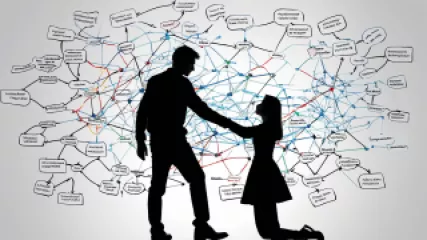Navigating Rejection: A Research-Driven Approach
Navigating Rejection: A Research-Driven Approach
Rejection, a common experience that often leaves us feeling isolated, hurt, and uncertain about our self-worth. Yet, it is a natural part of the human experience, one that can profoundly shape our personal and professional lives. As researchers continue to delve into the complexities of rejection, a deeper understanding of its root causes and effective coping strategies has emerged. In this comprehensive article, we will explore a research-driven approach to navigating the challenges of rejection and cultivating resilience.
The Psychology of Rejection: Unpacking the Impact
At the core of the rejection experience lies a fundamental human need – the desire to belong. Belonging is a crucial aspect of our well-being, as it provides a sense of security, self-esteem, and social support. When we are rejected, whether in personal relationships, job applications, or social situations, our brain processes this experience as a threat to our social connection, triggering a range of physiological and emotional responses.
According to a study published in the Journal of Personality and Social Psychology, the pain of rejection is remarkably similar to physical pain, activating the same neural pathways in the brain. This neurological response underscores the profound impact rejection can have on our overall well-being, both mentally and physically.
Rejection can also have a significant impact on our self-esteem and sense of self-worth. Leilani Horton, a clinical psychologist specializing in the study of rejection, explains, "When we are rejected, we often internalize the experience, interpreting it as a reflection of our own shortcomings or undesirability. This can lead to a spiral of negative self-talk and diminished self-confidence."
The consequences of rejection can extend beyond the immediate emotional turmoil, affecting our long-term mental health. Research has shown that chronic rejection can contribute to the development of depression, anxiety, and even post-traumatic stress disorder (PTSD). Understanding the deep-rooted psychological impact of rejection is the first step in developing effective coping strategies.
Coping with Rejection: A Multifaceted Approach
Navigating the challenges of rejection requires a multifaceted approach that addresses both the emotional and cognitive aspects of the experience. Here are some research-backed strategies to help individuals cope with rejection:
1. Practicing Self-Compassion
Self-compassion, the act of treating ourselves with kindness, understanding, and non-judgment, has emerged as a powerful tool in the face of rejection. Arturo Hernandez, a researcher at the University of California, Berkeley, found that individuals who practice self-compassion are better equipped to cope with rejection and maintain a positive sense of self-worth.
This approach involves recognizing that rejection is a common human experience, and that we all make mistakes or experience setbacks. By extending the same empathy and understanding to ourselves that we would offer a close friend, we can mitigate the damaging effects of rejection and foster a more resilient mindset.
2. Challenging Negative Thought Patterns
Rejection often triggers a cascade of negative thoughts and self-judgments. Research has shown that cognitive-behavioral therapy (CBT) can be an effective tool in helping individuals identify and reframe these unhelpful thought patterns. By recognizing and challenging distorted beliefs, such as "I'm not good enough" or "I'll never find love," individuals can develop a more balanced and constructive perspective.
Lance Harper, a psychologist specializing in rejection therapy, emphasizes the importance of this cognitive reframing: "When we're rejected, it's easy to fall into the trap of catastrophizing and assuming the worst. But by consciously challenging these negative thought patterns, we can start to see the situation more objectively and open ourselves up to new possibilities."
3. Cultivating a Support Network
Social connection is a powerful antidote to the isolating effects of rejection. Studies have shown that individuals with a strong support system, whether it's close friends, family, or a therapist, are better able to manage the emotional impact of rejection and maintain a sense of belonging.
By sharing our experiences with trusted individuals and seeking out empathetic listeners, we can alleviate feelings of shame and loneliness. Additionally, engaging in social activities and building new connections can help us reframe rejection as an opportunity to expand our social circle and find more fulfilling relationships.
4. Embracing Vulnerability
Rejection often stems from our fear of vulnerability, the worry that exposing our true selves will lead to rejection. However, research suggests that embracing vulnerability can be a powerful tool in navigating the challenges of rejection.
Hadley Harper, a social psychologist at the University of Michigan, explains, "When we are willing to be vulnerable and authentic, we open ourselves up to deeper connections and the opportunity for genuine acceptance. While the risk of rejection may still be present, the potential rewards of vulnerability can far outweigh the fear."
By gradually stepping out of our comfort zones and sharing our authentic selves with others, we can build resilience and increase the likelihood of finding meaningful connections.
Rejection Therapy: Facing Fears and Building Resilience
Rejection therapy, a novel approach to coping with rejection, has gained traction in recent years. This technique involves intentionally seeking out experiences that may lead to rejection, with the goal of desensitizing individuals to the fear of rejection and building resilience.
Research on rejection therapy has shown promising results, indicating that this approach can help individuals develop a more resilient mindset, increase their tolerance for uncertainty, and ultimately improve their overall well-being. By facing their fears in a controlled environment, individuals can learn to reframe rejection as a natural part of life and develop more adaptive coping strategies.
Leilani Horton, a pioneer in the field of rejection therapy, explains, "Rejection therapy empowers individuals to take an active role in their healing process. By actively seeking out and overcoming small rejections, they can gradually build the confidence and resilience to handle larger rejections in the future."
Whether it's approaching a stranger for a conversation, applying for a job outside one's comfort zone, or asking someone on a date, the act of intentionally seeking rejection can help individuals learn to navigate the experience with greater ease and self-compassion.
Cultivating Post-Rejection Growth
While the initial experience of rejection can be deeply painful, research suggests that it can also serve as a catalyst for personal growth and resilience. Studies have shown that individuals who are able to reframe rejection as an opportunity for self-improvement and learning are more likely to experience post-traumatic growth, a positive psychological change that occurs in the aftermath of a challenging life event.
This process of post-rejection growth involves several key elements, including:
- Reassessing priorities: Rejection can prompt individuals to re-evaluate their values, goals, and the relationships they prioritize, leading to a more purposeful and authentic life.
- Developing new skills: Facing and overcoming rejection can spur individuals to acquire new skills, whether it's improving their communication abilities, developing a thicker skin, or expanding their professional expertise.
- Fostering self-awareness: The experience of rejection can increase self-awareness, allowing individuals to better understand their strengths, weaknesses, and the factors that contribute to their sense of self-worth.
- Cultivating empathy: Having endured the pain of rejection, individuals may develop a deeper sense of empathy and compassion for others who are going through similar experiences.
Arturo Hernandez, a researcher at the University of California, Berkeley, emphasizes the importance of this post-rejection growth: "Rejection is not just a challenge to be overcome; it's an opportunity for personal transformation. By embracing the lessons and insights that come with the experience, individuals can emerge from the process stronger, more resilient, and better equipped to navigate the complexities of life."
Navigating Rejection in Relationships
Rejection in the context of personal relationships can be particularly challenging, as it often involves complex emotions and a deep sense of vulnerability. Whether it's the end of a romantic partnership, the loss of a close friendship, or the breakdown of a family bond, the experience of relational rejection can have a profound impact on an individual's well-being.
Research has shown that the pain of relational rejection can be more intense and longer-lasting than other forms of rejection, as it directly threatens our fundamental need for belonging and connection. The sense of loss, betrayal, and abandonment can be overwhelming, leading to a range of emotional and behavioral responses, such as depression, anxiety, and difficulty trusting others in the future.
However, there is hope. By employing the research-driven strategies discussed earlier, such as practicing self-compassion, challenging negative thought patterns, and cultivating a supportive network, individuals can navigate the challenges of relational rejection and emerge with a renewed sense of resilience and self-worth.
Hadley Harper, a relationship therapist, emphasizes the importance of this holistic approach: "Healing from relational rejection requires a multifaceted approach that addresses the emotional, cognitive, and social aspects of the experience. By taking the time to process the grief and pain, while also actively working to rebuild self-esteem and foster new connections, individuals can reclaim their sense of belonging and find fulfillment in their personal relationships."
Rejection and Mental Health: Seeking Support
Navigating the challenges of rejection can take a significant toll on an individual's mental health. Research has shown that chronic rejection can contribute to the development of depression, anxiety, and even post-traumatic stress disorder (PTSD). In severe cases, the emotional pain of rejection can lead to suicidal ideation or self-harm.
It is essential for individuals struggling with the effects of rejection to seek professional support and mental health resources. This can include therapy, support groups, or even online communities where individuals can connect with others who have experienced similar challenges.
Lance Harper, a psychologist specializing in mental health and rejection, emphasizes the importance of addressing the underlying emotional and psychological needs: "Rejection can be deeply traumatic, and it's crucial for individuals to have access to the appropriate support and resources to navigate this experience. Whether it's cognitive-behavioral therapy, mindfulness practices, or a combination of approaches, the goal is to help individuals develop the tools and resilience to overcome the challenges of rejection and reclaim their sense of self-worth."
Conclusion: Embracing the Journey of Rejection
Rejection, while a challenging and often painful experience, can also be a catalyst for personal growth and transformation. By adopting a research-driven approach to navigating the complexities of rejection, individuals can develop the tools and strategies necessary to cope with this universal human experience and emerge stronger, more resilient, and better equipped to navigate the ups and downs of life.
Through the cultivation of self-compassion, the challenging of negative thought patterns, the cultivation of a supportive network, and the embrace of vulnerability, individuals can begin to reframe rejection as an opportunity for self-improvement and personal growth. And by engaging in practices like rejection therapy, they can actively confront their fears and build the resilience needed to handle rejection with greater ease and self-assurance.
Ultimately, the journey of navigating rejection is a deeply personal one, but by drawing upon the wealth of research and insights available, individuals can take solace in the knowledge that they are not alone in their struggles. With a commitment to self-care, a willingness to embrace the lessons of rejection, and a deep understanding of the human experience, individuals can not only survive the pain of rejection but also emerge from it with a renewed sense of purpose, strength, and self-worth.
Remember, if you or someone you know is struggling with the emotional impact of rejection and its effects on mental health, it is essential to seek professional support and access the appropriate resources. Your well-being and safety are of the utmost importance.






